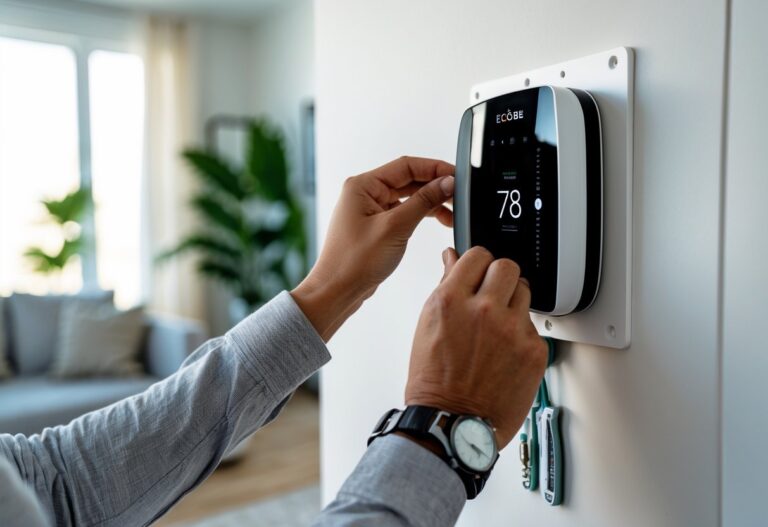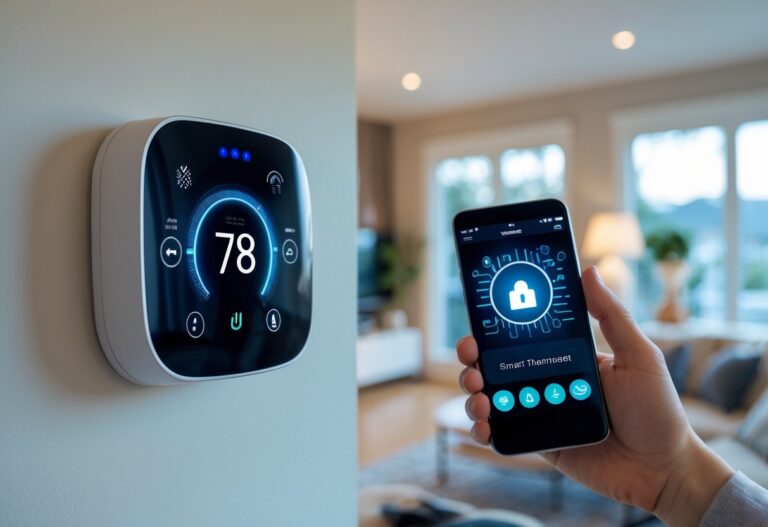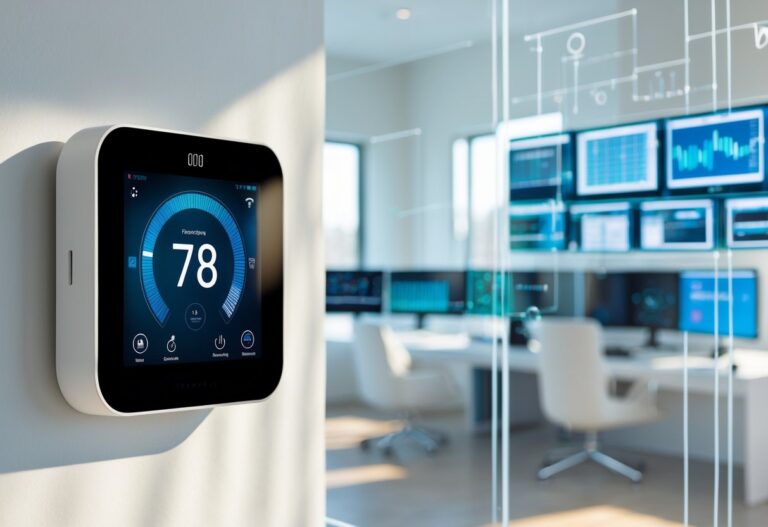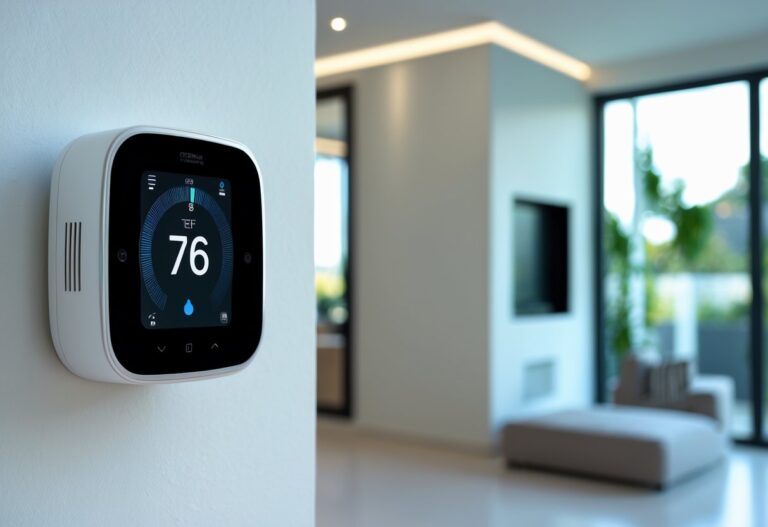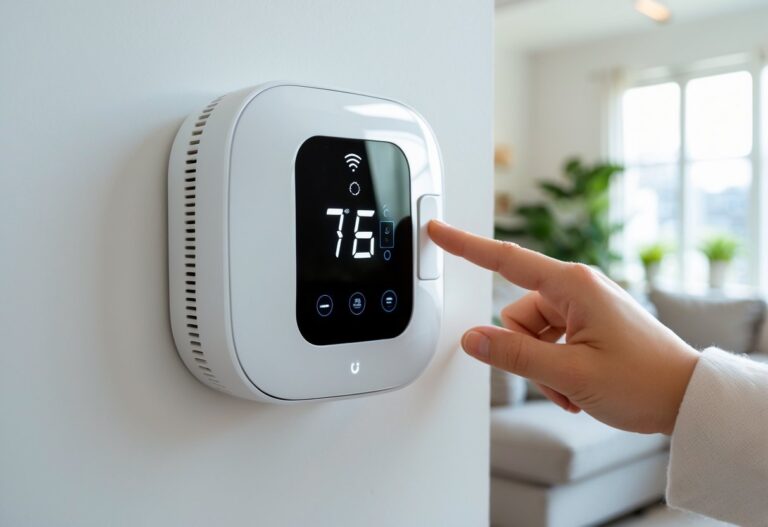Are you trying to figure out what sets a smart thermostat apart from a programmable thermostat? You’re not alone—many people find this topic confusing with all the new technology available for homes these days. The main difference is that smart thermostats adjust themselves and can be controlled from anywhere, while programmable thermostats follow a schedule you set but need to be changed manually.
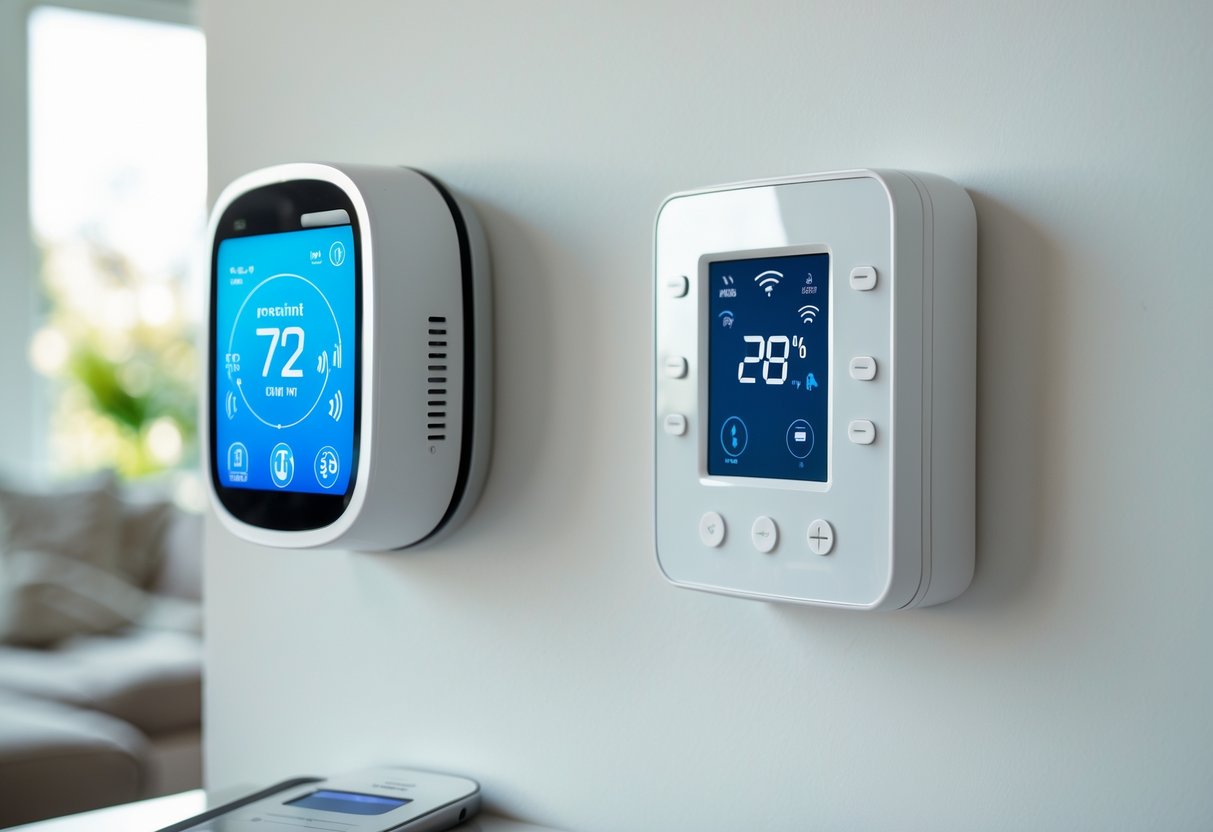
Knowing this can help you pick the right thermostat for your home and save money on energy bills. If you want to understand which type suits your needs best, keep reading to see how each thermostat works and what features you could be missing out on.
Key Takeaways
- Smart thermostats automatically learn and adjust, while programmable models rely on your set schedule.
- Both options can help with energy savings, but smart models offer more convenience.
- Picking the best thermostat means considering your lifestyle and comfort preferences.
Key Differences Between Smart Thermostats and Programmable Thermostats
Smart thermostats and programmable thermostats each control your heating and cooling, but the way they work and the features they offer are different. These differences affect how you interact with your thermostat and how much control you have over your home’s comfort and energy use.
Connectivity and Remote Access
A programmable thermostat works without an internet connection. You set the schedule and make any changes by using the buttons or screen on the thermostat itself. This means you must be physically present to adjust settings or view information.
In contrast, a smart thermostat is connected to your Wi-Fi network. You can control it from your smartphone, tablet, or computer from anywhere. This remote access makes it simple to change the temperature before you arrive home or check if your system is running while you’re away.
Smart thermostats also get updates and new features through the internet. This keeps your device current with the latest settings and improvements. Programmable thermostats do not have this capability.
| Feature | Programmable Thermostat | Smart Thermostat |
|---|---|---|
| Internet Connectivity | ❌ | ✔️ |
| Remote Control | ❌ | ✔️ |
| App/Web Access | ❌ | ✔️ |
Learning Algorithms and Automation
A programmable thermostat follows whatever schedule you enter. If your routine changes, you have to adjust the schedule yourself.
Smart thermostats use sensors and learning algorithms to figure out when you are usually home or away. Over time, they adjust the temperature settings automatically, based on your patterns. Some smart thermostats can even sense when you walk into a room and change the temperature for more comfort.
Many models can consider outside weather, home insulation, or occupancy to make your heating and cooling smarter. You do not need to remember to change the settings on days you are running late or leaving early. Smart thermostats can handle those changes for you.
Scheduling Capabilities
Both types of thermostats allow you to set heating and cooling schedules. Programmable thermostats let you set different temperatures for days, nights, and weekends. However, any changes in your routine require you to reprogram the schedule manually.
Smart thermostats offer more flexible scheduling. They let you adjust schedules easily by using a smartphone app or voice commands. You can pause, edit, or override the set schedule from anywhere, which means less hassle if your plans change.
Some smart thermostats include features like geofencing, which adjusts the temperature when you leave or return home. This level of automation is not available with a regular programmable thermostat.
Integration with Other Devices
Smart thermostats can connect with smart home systems like Amazon Alexa, Google Home, or Apple HomeKit. You can use voice commands to change the temperature or include the thermostat in routines. For example, saying “Good night” could lower the thermostat and turn off your lights at the same time.
They may also connect to energy-saving programs from your utility company, or display data from weather services. These features help your smart thermostat work with other devices to manage your home’s comfort and efficiency.
Programmable thermostats do not communicate with other devices and work as a standalone unit. They do not offer compatibility with voice assistants or smart speakers.
Key integration benefits of smart thermostats:
- Voice control with popular assistants
- Automation with other smart devices
- Participation in energy-saving programs
- Expanded features through software updates
Energy Efficiency and Cost-Saving Potential
Smart thermostats and programmable thermostats both aim to help you use less energy and save money. The ways they work, the features they offer, and the data they provide can affect your energy bills and comfort level in different ways.
Energy-Saving Features
Smart thermostats use technology to help you save more energy compared to traditional programmable thermostats. They can learn your habits and automatically adjust the temperature when you’re home, away, or asleep. Features like geofencing let the thermostat detect when you leave or return, so it changes the temperature automatically. You can also control most smart thermostats from your phone, giving you the option to change settings even when you’re not at home.
Programmable thermostats let you set heating and cooling schedules for different times of the day or week. If you stick closely to a routine, these schedules can save energy and lower your bills. However, they don’t adjust on their own when your routine changes, which can lead to wasted energy if you forget to reprogram them.
| Feature | Smart Thermostat | Programmable Thermostat |
|---|---|---|
| Automatic Adjustments | Yes | No |
| Learns User Habits | Yes | No |
| Remote Control | Yes | Rarely |
| Schedule Programming | Yes | Yes |
Energy Usage Reports and Insights
Smart thermostats provide detailed energy usage reports that show how much energy your heating and cooling systems use. These reports can include daily, weekly, or monthly usage patterns, and some models give you tips for saving even more energy. Seeing these trends can help you make better decisions and adjust settings for more comfort and savings.
Programmable thermostats rarely offer usage reports or feedback. You will not see how much energy you use unless you check your utility bill. This makes it harder to spot problems or find new ways to save money. If you want to learn about your daily or monthly trends, a smart thermostat gives you more control and information.
Impact on Heating and Cooling System Performance
How your thermostat manages temperature can affect the life and efficiency of your heating and cooling system. Smart thermostats can help your system work more efficiently by avoiding sudden, sharp changes in temperature. They make gradual adjustments based on your habits and home conditions, reducing wear and tear and possibly preventing breakdowns.
Programmable thermostats work well if you program them carefully and follow a set schedule. But if you forget to update your settings, the system might run when it’s not needed, causing extra strain and higher energy costs. Smart thermostats’ automation reduces this risk and helps maintain steady system performance, which can lead to fewer repairs and a longer-lasting system.
Advanced Features of Smart Thermostats
Smart thermostats offer features that focus on convenience, efficiency, and connectivity. They can help you save energy, respond to your habits, and connect easily with other technology in your home.
Geofencing Capabilities
Geofencing lets your thermostat use your phone’s location to set a virtual boundary around your home. When you leave that area, your thermostat can switch to an energy-saving mode automatically. When you return, it can get your home back to a comfortable temperature before you walk in the door.
This technology means you do not need to set rigid schedules. Your thermostat makes adjustments based on your real-time location. For people with changing routines or who travel often, geofencing prevents your system from running when no one is home.
Some models let you create custom zones and can even track the location of multiple family members. This makes automatic adjustments more accurate and can help lower your energy bills.
Voice Control
Smart thermostats often work with popular voice assistants like Amazon Alexa, Google Assistant, or Apple Siri. This allows you to change the temperature, set schedules, or check current settings with simple voice commands.
With voice control, you can say things like “Set the temperature to 70 degrees” or “Turn on the fan.” This feature is helpful for anyone, especially if you have your hands full or have limited mobility.
Voice controls also let you create routines. For example, you could say, “Goodnight,” and your thermostat will set the sleep temperature automatically. You rarely have to use physical buttons or the app, making day-to-day use fast and effortless.
Smart Home Device Integration
Smart thermostats can connect with other smart devices in your home, like lights, door locks, and security systems. Integration allows you to set up automation routines. For example, when you lock your front door, the thermostat can adjust for “away” mode without extra steps.
Most major smart home platforms—such as Alexa, Google Home, and Apple HomeKit—are supported. This lets you control many devices from one app or by using a single command.
Integration also means your thermostat can use info from other devices, like motion sensors or window sensors, to make more accurate decisions. This tightly connected system makes your home both smarter and more energy efficient.
Choosing the Best Thermostat for Your Home
Picking the right thermostat depends on more than just price. You should think about your daily routine, how much you want to spend, and whether your current HVAC system can support newer models.
Evaluating Your Lifestyle and Preferences
Your daily habits and comfort needs matter when choosing between a smart thermostat and a programmable thermostat. If your schedule changes a lot or you travel often, a smart thermostat offers flexibility. Features like remote temperature control by app, and the ability to learn your routines, make climate management easier.
A programmable thermostat works best if you follow a set routine. You can pre-set your heating and cooling schedule to match when you’re home or away. However, any change in plans means you have to update the settings by hand. If you value voice control or want hands-off automation, a smart thermostat is more suitable.
Key lifestyle questions:
- Do you want to adjust settings from your phone?
- Does a learning thermostat that adapts to your habits make sense for your family?
- Are you comfortable programming a device, or do you prefer simple solutions?
Budget Considerations
Cost is a main factor for many homeowners. Programmable thermostats usually have a lower upfront price compared to smart thermostats. They can still save you money by letting you set an energy-saving schedule.
Smart thermostats cost more at the start. However, they often lower your monthly energy bills by learning your preferences and adjusting temperature settings automatically. Over time, these savings can add up, but it might take a few years to balance out the initial investment.
| Type | Upfront Cost | Long-Term Savings |
|---|---|---|
| Programmable | Lower | Moderate |
| Smart | Higher | Higher (if used fully) |
Think about your budget now and how long you plan to live in your home when making your choice.
Installation and Compatibility Factors
Not every thermostat works with every home heating and cooling system. Before buying, check your current thermostat’s wiring and your HVAC system’s compatibility with newer models.
Many programmable thermostats are simple to install yourself. Smart thermostats often need a “C-wire” (common wire) to power their features. If your home lacks this wire, you may need an electrician to install one, which adds to the cost.
Some smart thermostats can work without a C-wire, but always check the manufacturer’s guidelines. Make sure your Wi-Fi is reliable if you want remote or voice control. Compatibility and installation needs can influence your decision as much as any other factor.
